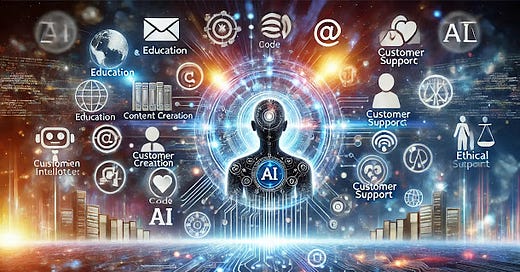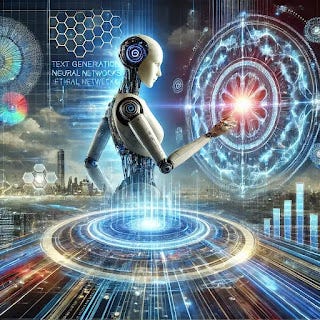Understanding ChatGPT and the Power of Artificial Intelligence
Artificial Intelligence (AI) is one of the most revolutionary advancements in human history, influencing nearly every aspect of modern life. Among the many groundbreaking innovations within AI, ChatGPT has emerged as a stellar example of how machines can understand and generate human-like language. Let’s explore what makes ChatGPT special, the broader landscape of AI, and its implications for the future.
What is ChatGPT?
ChatGPT, developed by OpenAI, is a language model built on the GPT (Generative Pre-trained Transformer) architecture. It is designed to understand and generate remarkably human-like text. Trained on vast datasets remarkably human-like textssist in writing, brainstorming ideas, answering questions, coding, and much more.
At its core, ChatGPT leverages deep learning techniques, specifically transformer models, to process and predict language patterns. Its pre-training involves analyzing billions of words from books, articles, and websites, followed by fine-tuning to align its responses with human preferences and ethical considerations. This dual-stage training process allows ChatGPT to be both versatile and context-aware, making it one of the most user-friendly AI tools available today.
The Evolution of AI: How Did We Get Here?
AI's journey began with the dream of creating machines that could mimic human intelligence. Over the decades, advances in computing power, algorithms, and data collection have paved the way for remarkable progress. Early AI systems were rule-based, relying on predefined instructions. However, they lacked adaptability and couldn’t handle complex tasks.
The introduction of machine learning (ML) marked a turning point. Instead of relying on explicit programming, ML models were designed to "learn" patterns from data. This breakthrough laid the foundation for deep learning, where neural networks—structures inspired by the human brain—allowed machines to process vast amounts of unstructured information.
OpenAI’s GPT models represent a culmination of these advancements. GPT-3 and its successors, including ChatGPT, have redefined AI’s potential, demonstrating capabilities that extend beyond mere computation to creative problem-solving and conversational fluency.
How Does ChatGPT Work?
ChatGPT operates on the transformer architecture, which excels in processing sequential data like text. Here’s a simplified breakdown:
1. Pre-Training: During this phase, the model learns language patterns by predicting the next word in a sentence based on the context of previous words. This involves analyzing enormous datasets that span various topics and writing styles.
2. Fine-tuning: After pre-training, the model undergoes fine-tuning, where it is adjusted to perform specific tasks or align with ethical guidelines. Human feedback is often used to ensure the model generates helpful and safe responses.
3. Inference: When a user inputs a query, the model generates a response by analyzing the input and predicting the most likely sequence of words. It adapts its answers based on context, making the conversation dynamic and engaging.
Applications of ChatGPT in Everyday Life
The versatility of ChatGPT has made it an indispensable tool across industries. Here are some of its prominent applications:
1. Content Creation: Writers and marketers use ChatGPT to draft articles, generate creative ideas, and refine their work. It’s a boon for brainstorming and overcoming writer’s block.
2. Education: ChatGPT acts as a virtual tutor, helping students understand complex topics, solve problems, and even learn new languages.
3. Customer Support: Many companies integrate ChatGPT into their customer service workflows to provide instant, accurate, and round-the-clock support.
4. Software Development: Developers use ChatGPT for coding assistance, debugging, and exploring new algorithms, significantly improving productivity.
5. Personal Productivity: From drafting emails to managing to-do lists, ChatGPT streamlines everyday tasks, saving users time and effort.
The Broader Implications of AI
While ChatGPT exemplifies the potential of AI, it also highlights critical questions and challenges for society:
1. Ethical Considerations: Ensuring that AI behaves responsibly and avoids generating harmful or biased content is a major concern. Continuous fine-tuning and human oversight are essential.
2. Impact on Jobs: Automation through AI has raised concerns about job displacement. However, it also creates opportunities for new roles, such as AI trainers and developers.
3. Data Privacy: With AI systems relying on vast amounts of data, safeguarding user privacy is paramount. Regulations and transparency are vital to building trust.
4. Access and Equity: Democratizing access to AI tools like ChatGPT ensures that their benefits are widely shared and not limited to specific regions or industries.
The Future of AI and ChatGPT
The potential of AI is boundless. Future iterations of ChatGPT and similar models will likely exhibit even greater contextual understanding, emotional intelligence, and specialized capabilities. Here’s what we can expect:
1. Enhanced Personalization: AI tools will better adapt to individual user preferences, offering highly customized solutions.
2. Cross-Modal Capabilities: Future models may integrate text, images, and video seamlessly, opening new possibilities for creative and professional applications.
3. Collaboration with Humans: AI will become a collaborative partner rather than a mere tool, helping humans tackle global challenges like climate change, healthcare, and education.
4. Stronger Safeguards: Advances in ethical AI will ensure that these systems remain safe, fair, and aligned with human values.
Conclusion
ChatGPT is more than just a chatbot; it’s a testament to how far AI has come and a glimpse into its extraordinary potential. By bridging the gap between machines and human communication, it empowers individuals and businesses alike. However, as with any transformative technology, it’s crucial to approach AI development and adoption with responsibility and foresight.
In the end, tools like ChatGPT remind us that AI isn’t just about automation—it’s about amplifying human creativity, curiosity, and connection. The journey is just beginning, and the future promises to be as exciting as it is transformative.





